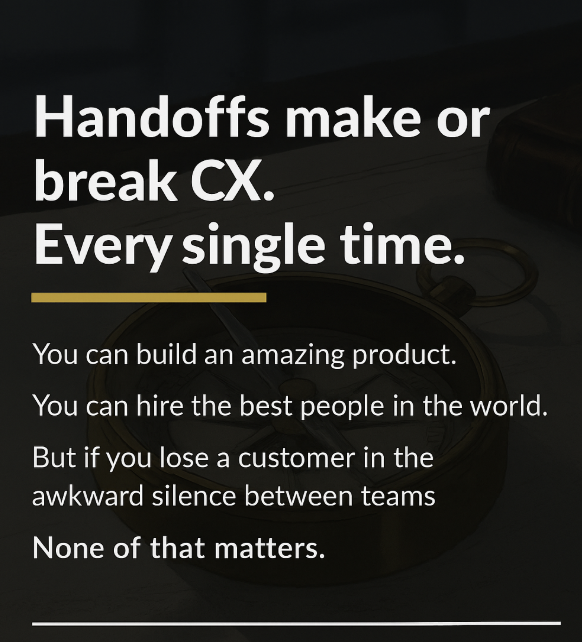Trigger-Based Playbooks: How to Engage Customers at Exactly the Right Moment
- Johan Gedde
- May 1
- 3 min read
In Customer Success, timing beats touchpoints every time.
Yet most CS teams still default to timeline-based check-ins:
30 days after onboarding
Mid-quarter status update
Pre-renewal QBR
These aren’t engagement strategies—they’re calendar reminders. And more often than not, they come too late to drive real value or prevent churn.
✅ What High-Performing CS Teams Do Instead
They implement trigger-based playbooks.
These systems activate based on actual customer behavior—not the calendar—to deliver timely, relevant, and scalable engagement.
The result?
Faster adoption
Higher retention
Better expansion outcomes
And fewer missed opportunities
This isn’t theory—it’s what we use.
Here’s a look at how we built and operationalized ours.
🔄 Execution Snapshot: How We Built Our Trigger-Based Playbooks
Let’s walk through the 4 steps we used to move from reactive outreach to behavior-driven precision.
1️⃣ Identify Leading Indicators of Success
Before you can respond to triggers, you need to know which behaviors matter.
We started by mapping actions that reliably predicted long-term success. These included:
Consistent use of core features
Early achievement of onboarding milestones
Invitations of additional users within the first 2 weeks
Creation of high-value workflows or automations
These leading indicators became the foundation of our playbook logic.
2️⃣ Establish Structured Adoption Milestones
Next, we turned those indicators into measurable milestones aligned with the customer journey.
Each milestone represented a key moment of value realization, such as:
First workflow configured
First reporting dashboard published
Admin onboarding complete
Expansion triggers (e.g., license thresholds met)
These milestones helped us track progress in real time—and created the opportunity for timely interventions.
3️⃣ Build Milestone-Triggered Playbooks
With milestones in place, we built automated playbooks to trigger personalized outreach based on customer progress—or lack thereof.
➤ When a milestone is achieved:
Customers receive congratulatory messages, next-step resources, or invitations to strategic conversations.
➤ When a milestone is delayed or skipped:
The system triggers unscheduled interventions, such as check-in emails, training session invites, or escalations.
This structure turned our engagement strategy into something proactive and responsive, not scripted and rigid.
4️⃣ Leverage AI for Insight, Personalization, and Scale
This is where the system becomes intelligent.
We layered in AI to do three things:
🔍 Predictive Insights
AI identifies patterns—like subtle declines in engagement—before they escalate into risk.
🧠 Personalized Engagement
Outreach is tailored dynamically to customer behavior, needs, and past interactions.No more one-size-fits-all emails.
🚀 Proactive Engagement at Scale
Automation ensures that the right message reaches the right customer at the right time, without burdening the team.
The playbooks run 24/7—even when your CSMs are sleeping.

AI enhances timing and personalization by turning customer behavior signals into automated playbooks—and alerts CSMs when human intervention is needed.
🧠 Why Trigger-Based Systems Work
They’re not just about faster action—they’re about smarter action.
They let you shift from:
Static timelines → Dynamic signals
Reactive emails → Timely, personalized nudges
Manual monitoring → Scalable, intelligent automation
And they work across the full customer journey:
Signals → Alerts → Playbooks → Outcomes
👀 What’s Coming Next
In the next article, I’ll walk you through how to build a structured communication plan that’s:
Consistent across segments
Personalized for each customer
Aligned with journey stages and outcomes
Because frequency alone doesn’t drive engagement—relevance does.
💬 Your Turn
Are you using behavioral triggers to engage customers today?What signals are you watching—or missing?
I’d love to hear what you’re experimenting with. Share your thoughts or reply with your favorite playbook tactic.
✅ Follow me on LinkedIn for weekly frameworks and execution-first strategies.
📬 Subscribe to my newsletter for access to playbook templates and trigger libraries - launching soon.





Comments